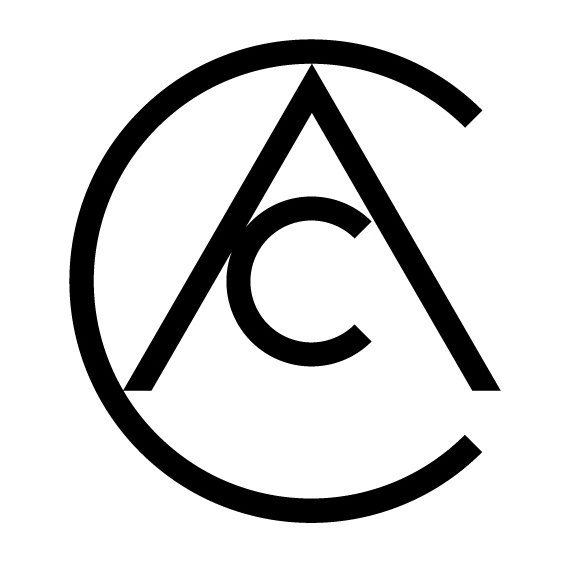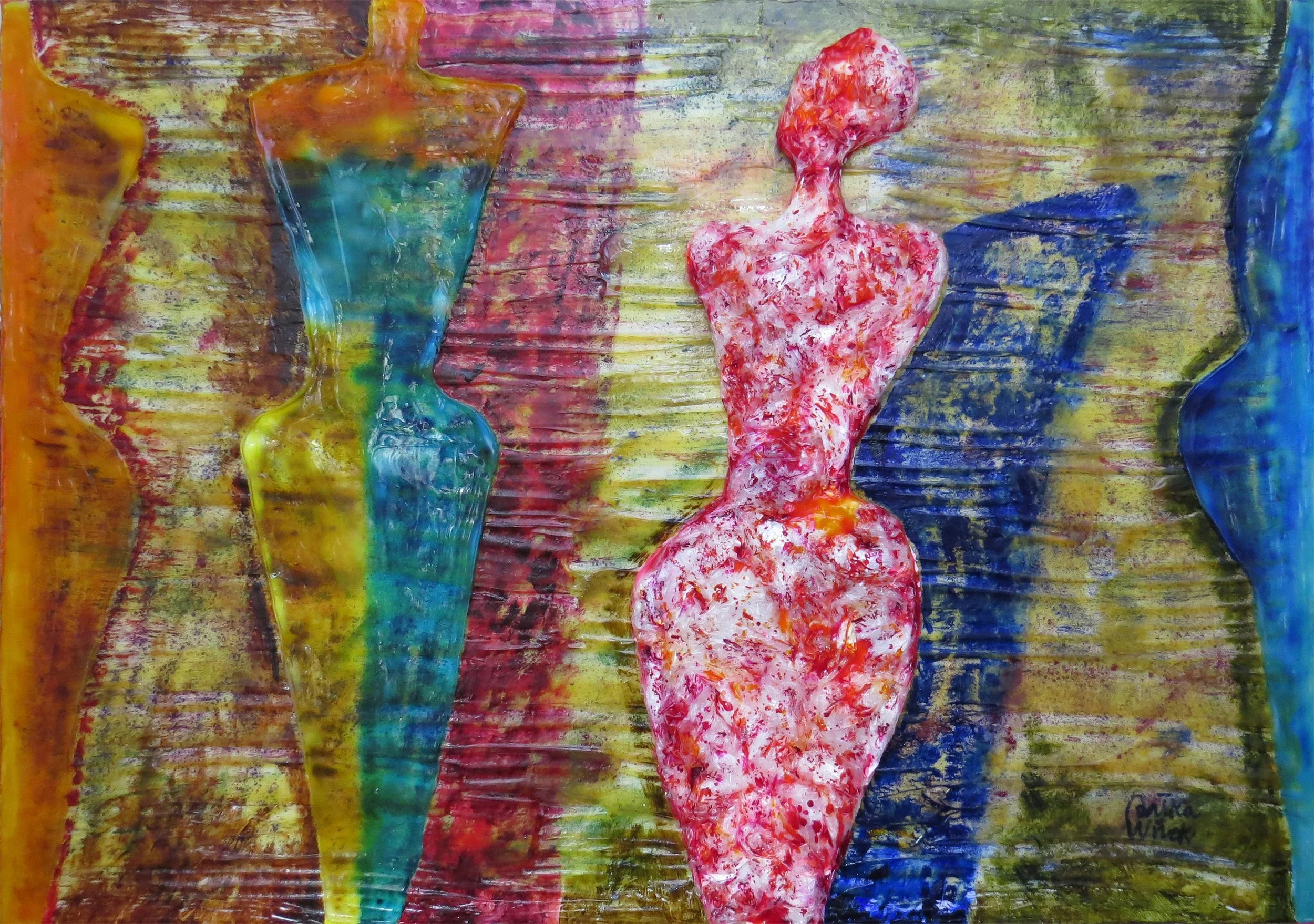Barbara Palka Winek
To encounter the paintings of Barbara Palka Winek is to enter a charged field where color, texture, and form coalesce into a meditation on existence, where the weight of paint itself seems to vibrate with spiritual intensity and the surface becomes a threshold into the metaphysical.
Her canvases are not simply images but events, occurrences that pulse with the immediacy of lived time and the infinite weight of memory. It is a practice that emerges from a deep artistic lineage her father, a painter, instilled in her a devotion to art as dialogue, as community, as the very atmosphere of existence. That atmosphere, she recalls, was filled with constant reflection and debate about painting. From this environment grew not only her own vocation but a familial continuum: a husband who is a graphic artist, and children who pursued their own studies at the Academy of Fine Arts in Krakow, where she too received her formation in 1983.
Winek’s paintings unfold in cycles—Screens, Woman-Imago, Stream of Time, Obsessions, Archetypes, each orbiting the central gravitational force of her oeuvre: the figure of the woman, both archetypal and intimate, abstract and bodily. The woman is never portrayed in Winek’s work; she is rather a vessel, a form through which desire, obsession, reflection, and transcendence flow.
Her art does not submit to the flatness of surface. For years, she sought the means to penetrate beyond the two-dimensionality of paint, searching for a transparent medium that could evoke plasma, that mysterious substance between matter and energy. What has emerged through this experimentation is a pictorial language that holds at once solidity and liquidity. The surface is alive: light bends differently across flat pigment and thick relief, across opaque oil and translucent resin. In these layered refractions, we sense the transience of the moment—the very theme Winek articulates as her guiding aim.
In the Screens cycle, Winek offers figures poised against vibrating backgrounds of vertical color fields, simultaneously revealed and veiled by their environment. Works like SCREENS, 2025 or SCREENS XXX, 2024 present elongated silhouettes suspended within chromatic flux. The figure is reduced to contour, a membrane of being, stretched across strata of color. These are not screens that conceal, but that radiate, suggesting the permeability of body and world.
In SCREENS – SIMULATION, 2025, she intensifies the dialogue between abstraction and figuration: geometric rhythms are pressed against the organic form of the body. The effect is one of simultaneity; our gaze oscillates between the legibility of the human outline and the fascination of pattern. The “simulation” here is not illusion but echo, an insistence that the human cannot be extricated from the structures that surround it, whether cultural, technological, or cosmic.
The Woman-Imago cycle carries this further, embodying the archetype of the feminine. In WOMAN II, 2024 and WOMAN, 2025, the figure becomes monumental, faceless, yet insistently present. Draped in cascading reds or clothed in luminous floral textures of impasto, these women are less individuals than embodiments of femininity itself—its sensuality, its strength, its mutability. Winek here participates in a long lineage of artists who have made the woman central to their vision, yet she refuses objectification. Her women do not perform; they simply are.
Winek’s works demonstrate an acute understanding of color as both material and emotional force. In LOVE, 2024, the saturation of crimson is not simply a color choice but a metaphysical insistence. It consumes the canvas, threatening to obliterate form, yet it is precisely within this engulfing field that the figure emerges, draped, dignified, solitary. Here, love is not tenderness but intensity—an obsessive flame that transforms the body into a radiant icon.
In DREAM, 2024, the tonality shifts. The reds soften, yielding to floral patterns that recall both textile and hallucination. The figure dissolves into its environment, as though dream itself had no edges. The woman in red becomes a spectral echo, her identity blurred by the textures that surround her. Dream here is not an illusion but an ontological mode, a way of being suspended between waking and transcendence.
RED MOON, 2025 juxtaposes the female figure with a celestial orb, an immense, glowing planetary body that dominates the left half of the canvas. The dialogue between figure and cosmos is stark: the woman, seated, contemplative, faces the moon, as if drawn into gravitational conversation. This work belongs to the cycle Stream of Time, in which Winek meditates on cosmology, multidimensionality, and parallel worlds. The moon is no longer an astronomical object but a temporal metaphor: waxing and waning, cyclical, eternal.
The Time Stream cycle crystallizes Winek’s fascination with the universe beyond the body. Works such as LUMINOSITY, 2025, engulf us in radiant orbs of light, suns that pulse against fiery horizons. In these canvases, she captures the simultaneity of cosmic scale and human fragility. The orb is both sun and eye, universe and nucleus. Here, Winek situates her practice not simply in the domain of representation but of philosophy: what is time, what is energy, how does the body relate to the cosmic?
These canvases are deeply phenomenological. The viewer does not merely look at them but enters their vibration. The textures shimmer, colors bleed into one another, and surfaces refract and distort. One senses that these paintings are less about depicting than about transmitting energy itself.
Winek often remarks that for her, painting is a link between the real and the transcendent. This is not romantic rhetoric but the very grammar of her work. Each painting functions as a threshold, between opacity and transparency, between presence and absence, between body and cosmos. Her invention of a medium that resembles plasma is crucial here: it materializes what is usually immaterial. In these viscous layers, one sees the paradox of existence: the fragility of the body and the endurance of energy.
What distinguishes Winek in the contemporary scene is her refusal of indifference. “Each painting should make an impression; it cannot be indifferent to the viewer,” she insists. In an art world often dominated by irony or detachment, Winek insists on affect, on impact. Her canvases are meant to be felt, to require the emotional engagement of the spectator. Light glides across textured planes, drawing us into a sensorial field that demands patience, attentiveness, and openness.
To situate Winek is to see her both within the context of Polish art—steeped in the traditions of Krakow’s Academy, guided by the masters Szancenbach, Brzozowski, and Buczek—and also in dialogue with global contemporary practice. Her exhibitions across Paris, London, New York, Florence, and Tokyo place her in the international arena, but what she offers is not simply participation in a global market. She brings with her the specificity of Central European sensibility: a history marked by resilience, reflection, and a constant negotiation between past and future.
If one were to draw a single historical comparison, it might be with Gustav Klimt. Not because Winek imitates him, she does not, but because both artists understand the figure as surface and symbol, both explore the sensuality of ornament as existential force, and both situate the woman at the center of their iconography. Where Klimt’s women shimmer with gold, Winek’s glow with plasma-like translucency; where his ornament is mosaic, hers is thick impasto. Yet both are committed to the figure as more than representation, as archetype, as energy, as transcendence.
Barbara Palka Winek occupies a singular place in contemporary art because she resists reduction. She is neither purely abstract nor purely figurative, neither wholly formalist nor narrative. Instead, she inhabits the in-between, the interstitial space where body dissolves into color, where cosmos enters form, where paint becomes both material and metaphysical.
Her art is important because it insists on mystery. In a culture saturated with images, Winek returns us to painting as a site of enigma, as a space where something resists immediate comprehension. Each cycle she undertakes—Woman, Screens, Time Stream is not closed but ongoing, ever generating new possibilities. Her practice acknowledges that identity, time, and desire are never fixed but always in motion.
To engage her work is to enter into dialogue with the transience of life itself: love inflected with sadness, reflection intertwined with expectation, fragility bound up with cosmic endurance. Her canvases remind us that painting remains capable of wonder, of evoking not just the world we see but the dimensions we sense.
Barbara Palka Winek is not simply an award-winning artist, though her accolades from Florence, Venice, Rome, and beyond attest to her mastery. She is, above all, a visionary who dares to bridge body and cosmos, matter and light, the personal and the universal. In her art, we glimpse not only the form of woman but the very stream of time, the pulsing of existence itself.
Her achievement also rests in her persistence in deepening painting’s language, refusing to allow it to be relegated to nostalgia or obsolescence. In her hands, painting renews its urgency as a site of thinking. She gives us work that questions, that asks us to pause, to see the infinite within the immediate. Each surface, thick with experimentation, reminds us of the body’s permeability, of how fragile flesh and enduring energy coexist in constant oscillation. Her work also emphasizes continuity, the inheritance of her father’s artistic world, the extension of her passion into her children’s studies, and the ongoing dialogue with her husband. This generational fabric is woven into her canvases, each painting a testament to art as living tradition.
In this sense, Winek’s oeuvre becomes more than personal expression. It is a contribution to the cultural conversation about what it means to be human in an age of fractured identities and fleeting images. Her paintings restore depth, offering not the shallow gratification of instant recognition but the profound reward of contemplation. They remind us that art can still carry mystery, that it can still transport us beyond ourselves, into the delicate interplay of body, color, and cosmos. And in this way, Barbara Palka Winek’s work will endure, not as an isolated practice but as part of the larger history of painting’s striving for transcendence.
By Marta Puig
Editor Contemporary Art Curator Magazine
DREAM, 2024, oil and own technique on canvas, 140 x 100 cm
LOVE, 2024, oil and own technique on canvas, 140 x 100 cm
LUMINOSITY, 2025, oil and transparent medium on canvas, 100 x 150 cm
RED MOON, 2025, oil and own technique on canvas, 140 x 100 cm
SCREENS, 2025, oil and own technique on canvas, 140 x 200 cm
SCREENS XXX, 2024, oil and own technique on canvas, 100 x 140 cm
SCREENS-SIMULATION, 2025, oil and own technique on canvas, 100 x 150 cm
WOMAN, 2025, oil and own technique on canvas, 140 x 100 cm
WOMAN AND SCREENS, 2025, oil and own technique on canvas, 140 x 100 cm
WOMAN II, 2024, oil and own technique on canvas, 140 x 100 cm













